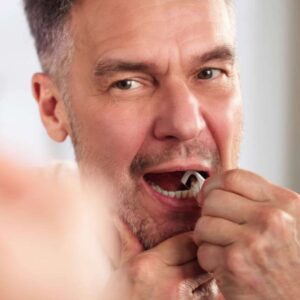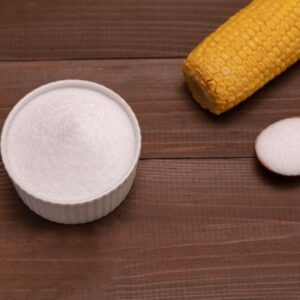
Ancient Happiness Element Revealed
- Was the ancient remedy for health a case of mistaken identity?
- Discovered: The one element Mark Twain and Teddy Roosevelt sought out
- Boost your brain for just pennies a day! Find out more…
Dear Reader,
Water is the most common denominator for all living things.
Perhaps this is why many ancient civilizations, most famously the Romans, used water — specifically, springs — to rejuvenate their bodies and restore overall happiness.
But it wasn’t only the Romans who found healing properties in water — the ancient Greeks, Native Americans, Europeans, and many other ancient peoples turned to water to find balance, peace of mind, and happiness.
Even more modern folks, like Nobel Prize winner Albert Szent-Gyorgi knew the value of water as shown by his famous quote:
Water is life’s matter and matrix, mother, and medium. There is no life without water.
Futhermore, natural springs became wildly popular during the 19th and 20th centuries in America. Many notable Americans including Mark Twain and President Theodore Roosevelt sought the healing powers of springs.
The thing is — it wasn’t actually the water that healed them.
Instead, the real key to their boosted mood, renewed vigor, and longevity was a mineral dissolved in the springs waters.
An element so powerful modern science has proven it can even reduce violent crimes and suicides, support brain health, and improve overall health and well-being.
So what is this miracle mineral?
Here’s a hint: It’s probably in a battery or a pharmacy near you.
But don’t worry, you won’t need to go around licking batteries or spending time in the doctor’s office to get a health-bolstering dose.
![]() The Element of Happiness
The Element of Happiness
It’s lithium — and its life-changing powers are available over the counter.
We will share how to incorporate lithium into your health routine in just a bit.
First, let’s take a look at the power of lithium…
Lithium’s health value first became apparent in the 1970s. Studies at that time found animals who ate diets with low doses of lithium (thousandths of the amount prescribed to psychiatric patients) experienced longer lives with fewer reproductive and behavioral issues.1
A 1990 study published in Biological Trace Element Research looking at data taken from 27 Texas counties with wide-ranging levels of lithium in their water supplies shows that communities with higher levels of lithium experienced fewer suicides, homicides, and violent crimes.
In fact, the numbers show that communities with the highest levels of lithium had 40 percent fewer suicides than the communities with the lowest lithium levels.
Another interesting fact found in the study is that the communities with higher levels also saw a reduction in arrests for the possession of cocaine, morphine, heroin, and codeine. 2
As a summary of the results, it seems that residents with more lithium were likely happier and less likely to abuse drugs.
Japan, Greece, and Austria, also provide study data that also support the inverse correlation between suicide rates and high lithium levels in drinking water.
When the data from the Japanese study were reanalyzed for a second publication, high levels of lithium in drinking water were associated with lower instances of “all-cause mortality” — this means all causes of death were lower.1,3
Plus, a review of several studies involving lithium in drinking water finds that nine out of 11 of these studies see a link between “beneficial clinical, behavioral, legal, and medical outcomes” and higher levels of lithium in drinking water. 1
But even more incredible, research has found that lithium given in higher therapeutic doses can also increase gray matter volume… after just four weeks of treatment in bipolar patients. The authors conclude this may because lithium may protect the brain and help to keep neurons alive. 4
Another study finds lithium creates new hippocampus neurons in mice. The hippocampus is the region of the brain responsible for organizing your memories. 9
Tufts University School of Medicine professor of psychiatry Dr. Nassir Ghaemi, is perhaps one of the best informed supporters of lithium. He reports this about the miracle mineral and it’s studies:
Lithium is, by far, the most proven drug to keep neurons alive, in animals and in humans, consistently and with many replicated studies.1
All of this modern research indicates that both ancient and modern civilizations were honed in on the healing powers of lithium — even if they were mistaken about its identity.
![]() A Dry Supply
A Dry Supply
And with all of this positive research, you might think that public health departments blew it by adding fluoride, not lithium, to municipal water sources. And they probably did.
So, if you want to harness the health and happiness of low-dose lithium.
Take a soak in a spring. There is a website called soak.net that can help you locate a lithium spring near you. Click here to search.
Another way to get a low dose of lithium is through supplementation. Lithium orotate is a common form you can get over the counter.
And the best news — it’s cheap!
A 60-day supply is usually under $10! That’s just pennies a day!
As always, consult with your doctor before starting a new supplement.
If you are having thoughts of hurting yourself or anyone else, seek medical attention immediately.
Live well,

Natalie Moore
Managing editor, Living Well Daily
Ed. Note: Please send your feedback: nmoore@lfb.org – and click here to like us on Facebook.
Sources
[1] Should We All Take a Bit of Lithium?
[3] Lithium in Tap Water and Suicide Mortality in Japan
[4] Lithium-induced increase in human brain grey matter.
[5] Enhancement of hippocampal neurogenesis by lithium.
[6] Lithium: Dietary and Supplement Doses
Written By Natalie Moore
Natalie Moore is a dedicated health researcher with a passion for finding healthy, natural, and science-based solutions. After a decade of direct healthcare experience in western and natural medicine, she was involved in public health research before joining Living Well Daily.
View More Free Articles
This Sleep Mistake Is Doubling Your Disease Risk
Think your inconsistent bedtime is just a harmless habit? Think again. New research reveals that going to bed at different times each night isn’t just making you tired—it could be dramatically increasing your risk of serious diseases. But the key to making sure poor sleep doesn’t derail your health goals likely isn’t what you think…....
Stop Obsessing Over Diet Trends
Can we stop with the endless diet debates already? Every other week there’s a new headline shouting about which diet is best for weight loss, heart health, or diabetes. Paleo, keto, low-carb, high-protein… it’s exhausting. And now, a new meta-analysis is out comparing the Mediterranean diet, the DASH diet, and something called AHEI (that’s “Alternative...
A New Reason to Ditch Processed Junk
If you’ve ever walked the inside aisles of your local grocery store and thought, “This is all just junk,” your instincts were spot on. A new study published in the journal Thorax just added another red flag to the list of dangers linked to ultra-processed food—a 41 percent higher risk of lung cancer. That’s right....
When Being Winded on Stairs Is Serious (And When It Isn’t)
I had an athlete visit me recently because he experienced shortness of breath while climbing stairs. He is in great shape, so he was worried about what it might mean. “Doc,” he said, “I run five miles three times a week. Why am I huffing and puffing after two flights of stairs?” His concern is...
Study EXPOSES Hidden Danger Lurking in Your Car
We think of our homes and cars as safe havens. But according to a startling new study, they may be flooding your lungs with microscopic plastic particles—every single day. Researchers in France recently found that adults inhale an average of 68,000 microplastic particles daily from indoor air alone. To put that in perspective, that’s about...
Mailbag: Is Modern Food Making You Snore?
“What can cause snoring, and is there a way to correct this issue?” —Seeking Silence Hi Seeking, Snoring happens when the soft tissues in your throat relax and vibrate as air passes through during sleep. While several factors can cause snoring—from sleep position to nasal congestion—I want to share one trigger that might surprise you....
Simple Food Swap SLASHES Dementia Risk 28%
Let’s be honest… who would jump at the chance to cut their dementia risk by 28 percent. And no, you don’t need to run marathons, survive on broccoli, or learn to play the zither (whatever that is) to make it happen. All it takes is one easy swap—something that’s probably already in your refrigerator. Researchers...
This SMART Floss Exposes Hidden Health Danger
Scientists have created dental floss that doesn’t just clean between your teeth—it also tracks your stress while you’re flossing. Now, I know what you’re thinking… “Great—now even flossing is going to stress me out by telling me how stressed I am.” But this fascinating new tool from Tufts University could be a game-changer for understanding...
Is This "Safe" Sweetener Damaging Your Brain?
The headlines are alarming… “Popular Sugar Substitute Linked to Brain Cell Damage” and “Erythritol Could Damage Critical Brain Barrier” are just two of the dozens I’ve spotted recently. But before you toss every sugar-free product in your pantry, let’s take a closer look at what this study actually shows—and what it doesn’t. The latest research...
This Summer Threat Could SPIKE Your Blood Sugar
Picture this… It’s another scorching hot summer day. You crank up the air conditioning while watching the weather forecast, which predicts yet another “record-breaking” heat wave. It’s starting to feel like just another miserably uncomfortable summer. But what you might not realize is that—if you have diabetes—those rising temps could do far more damage to...









